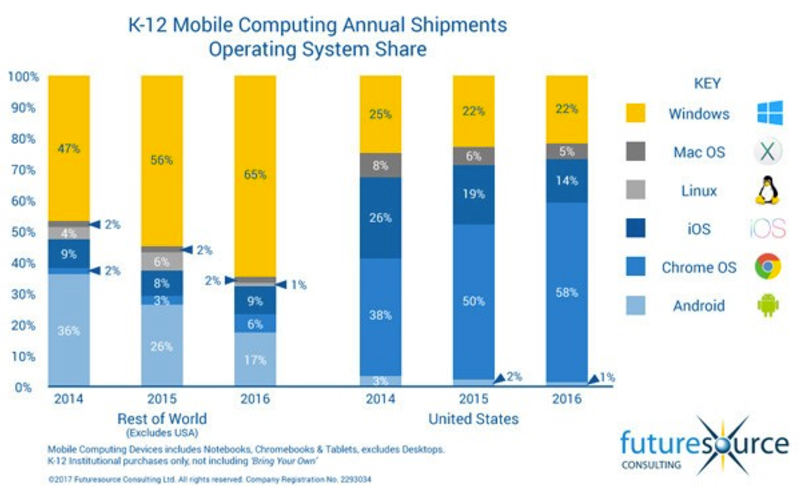A leaked Microsoft document showing base hardware specifications on a Windows 10 Cloud laptop appears to be the latest validation of serious competition for the Chromebooks market.
According to Windows Central, which got its hands on a “recommended minimum spec” document, presumed to be instructions for Microsoft’s OEM partners who will be manufacturing the device, shows what the “Edu Cloud” device will be able to do. It includes having an all-day battery, fast reboot and resume times and at least a quad-core Intel Celeron processor.
The document itself confirms the existence of Windows 10 Cloud because it is tltled: Windows 10 Cloud Targets.
Earlier this week we reported that Microsoft fans should not expect a Surface Phone or even a Surface Pro 5 launch at the May 2 event because it was clearly tagged #MicrosoftEDU. At the time, we assumed that it would be a Windows 10 Cloud-powered hybrid tablet to match up with Chromebook specifications and average pricing.
That speculation appears to be validated with this latest leaked document.
The biggest benefit to users, of course, is that this will be a low-cost product that could potentially eat into Chromebook’s healthy and growing sales. After all, Chromebooks are great because they cost less than traditional laptops, they’re fast, and they’re essentially low-specced but highly functional devices. We showed how big the market was for education hardware, and Microsoft is going after a piece of that.
Dubbed Cloudbooks by the media, the device may not have Surface branding because Microsoft may want to keep it distinct from its premium device line, but there is no confirmation of a model name for the device as of now.
Why Does Microsoft Need a Windows 10 Cloud Tablet for the Education Market?
In many ways, this is a critical product for Microsoft because, for one, as PC World points out:
“One key advantage of a Chromebook, from Google’s perspective, is that it contributes to a virtuous cycle: Kids use the popular Android tablets and phones at home, then access something similar in the classroom. To help break that chain, Microsoft needs to get kids used to Windows. While this may have little impact on you personally, you might say that this is a fight for the hearts and minds of your children.”
In terms of market share, Windows is barely holding on for the past two years, while Chrome OS on Chromebooks is growing by leaps and bounds, eating away at iOS and macOS market share.

While no mention was made of the Edu Cloud device’s appearance or physical features, we’re assuming that Microsoft will follow the form factor and design concept behind Surface hybrid tablets, allowing students to convert the tablet into a notebook/laptop with an attacked keyboard case. The 2-in-1 hybrid concept makes more sense for a student who’s always on the move.
With Windows 10 Cloud, the Edu Cloud device might even be suitable for teachers, because they can use it to log into their Office 365 Education tenancies, essentially a huge advantage over Chromebooks.
With 10 days to go before the May 2 event, all eyes will be on Microsoft’s big entry into the education hardware market with this Windows 10 Cloud-powered device, which could soon be available through the Microsoft Store and retail partners online and offline.
We’ll get you more information on possible pricing and availability dates as soon as we hear something.
Hey, would you do us a favor? If you think it’s worth a few seconds, please like our Facebook page and follow us on Twitter. It would mean a lot to us. Thank you.



